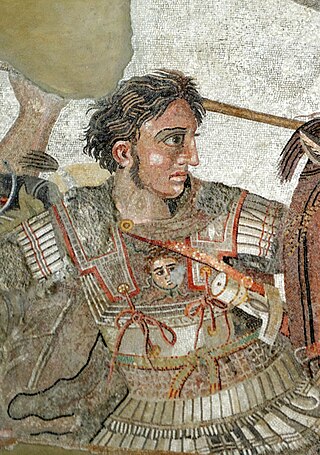
The Four Horsemen of the Apocalypse are described in the last book of the New Testament of the Bible, the Book of Revelation by John of Patmos, at 6:1–8. The chapter tells of a book or scroll in God's right hand that is sealed with seven seals. The Lamb of God opens the first four of the seven seals, which summons four beings that ride out on white, red, black, and pale horses.

Darius III, originally named Artashata and called Codomannus by the Greeks, was the last king of the Achaemenid Empire of Persia, from 336 BC to 330 BC. Artashata adopted Darius as a dynastic name.

The Battle of Gaugamela, also called the Battle of Arbela, was the decisive battle of Alexander the Great's invasion of the Persian Achaemenid Empire. In 331 BC Alexander's army of the Hellenic League met the Persian army of Darius III near Gaugamela, close to the modern city of Dohuk in Iraqi Kurdistan. Though heavily outnumbered, Alexander emerged victorious due to his army's superior tactics and his deft employment of light infantry. It was a decisive victory for the Hellenic League and led to the fall of the Achaemenid Empire.
Mardonius was a leading Persian military commander during the Persian Wars with Greece in the early 5th century BC who died at the Battle of Plataea.

The Battle of the Granicus River in May 334 BC was the first of three major battles fought between Alexander the Great and the Persian Empire. Fought in northwestern Asia Minor, near the site of Troy, it was here that Alexander defeated the forces of the Persian satraps of Asia Minor, including a large force of Greek mercenaries led by Memnon of Rhodes.

In ancient times, trade between the Indian subcontinent and Greece flourished with silk, spices and gold being traded. The Greeks invaded South Asia several times, starting with the conquest of Alexander the Great.
Pauravas was an ancient Indian dynasty in the northwest Indian subcontinent.
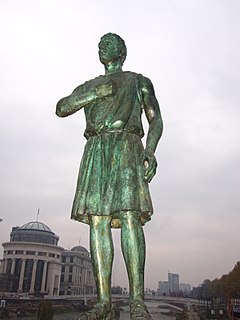
Parmenion was an ancient Macedonian general in the service of Philip II of Macedon and Alexander the Great. A nobleman, Parmenion rose to become Philip's chief military lieutenant and Alexander's Strategos. He was assassinated after his son Philotas was convicted on a charge of treason.
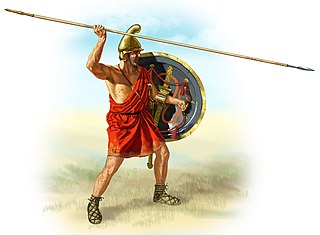
The army of the Kingdom of Macedon was among the greatest military forces of the ancient world. It was created and made formidable by King Philip II of Macedon; previously the army of Macedon had been of little account in the politics of the Greek world, and Macedonia had been regarded as a second-rate power.

The Clibanarii or Klibanophoroi were a Sassanid Persian, late Roman and Byzantine military unit of armored heavy cavalry.

Heavy cavalry is a class of cavalry whose primary role was to engage in direct combat with enemy forces, and are heavily armed and armoured compared to light cavalry. Although their equipment differed greatly depending on the region and historical period, they were generally mounted on large powerful horses, and were often equipped with some form of scale, plated, chainmail or lamellar armour as well as either swords, maces, lances, or battle axes.
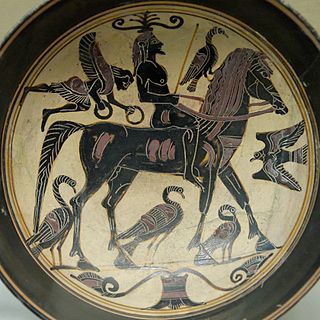
Hippeis is a Greek term for cavalry. In ancient Athenian society, after the political reforms of Solon, the hippeus was the second highest of the four social classes. It was composed of men who had at least 300 medimnoi or their equivalent as yearly income. According to the Timocratic Constitution the average citizen had a yearly income of less than 200 medimnoi. This gave the men who made 300 medimnoi the ability to purchase and maintain a war horse during their service to the state.

The Battle of the Persian Gate was a military conflict between a Persian force, commanded by the satrap of Persis, Ariobarzanes, and the invading Hellenic League, commanded by Alexander the Great. In the winter of 330 BC, Ariobarzanes led a last stand of the outnumbered Iranian forces at the Persian Gates near Persepolis, holding the Macedonian army for a month. Alexander eventually found a path to the rear of the Iranians from the captured prisoners of war or a local shepherd, eventually capturing Persepolis.

Classical Greece was a period of around 200 years in Greek culture. This Classical period saw the annexation of much of modern-day Greece by the Persian Empire and its subsequent independence. Classical Greece had a powerful influence on the Roman Empire and on the foundations of Western civilization. Much of modern Western politics, artistic thought, scientific thought, theatre, literature, and philosophy derives from this period of Greek history. In the context of the art, architecture, and culture of Ancient Greece, the Classical period corresponds to most of the 5th and 4th centuries BC. The Classical period in this sense follows the Greek Dark Ages and Archaic period and is in turn succeeded by the Hellenistic period.

Sabaces was an Achaemenid satrap of the Achaemenid Thirty-first Dynasty of Egypt during the reign of king Darius III of Persia.

The Achaemenid Empire, also called the First Persian Empire, was an ancient Persian empire based in Western Asia founded by Cyrus the Great. Ranging at its greatest extent from the Balkans and Eastern Europe proper in the west to the Indus Valley in the east, it was larger than any previous empire in history, spanning 5.5 million square kilometers. Incorporating various peoples of different origins and faiths, it is notable for its successful model of a centralised, bureaucratic administration, for building infrastructure such as road systems and a postal system, the use of an official language across its territories, and the development of civil services and a large professional army. The empire's successes inspired similar systems in later empires.
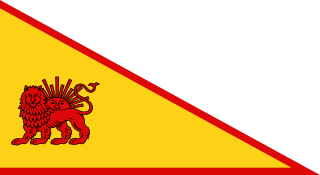
The military forces of the Afsharid dynasty of Persia had their origins in the relatively obscure yet bloody inter-factional violence in Khorasan during the collapse of the Safavid state. The small band of warriors under local warlord Nader Qoli of the Turkomen Afshar tribe in north-east Iran were no more than a few hundred men. Yet at the height of Nader's power as the king of kings, Shahanshah, he commanded an army of 375,000 fighting men which constituted the single most powerful military force of its time, led by one of the most talented and successful military leaders of history.

The Achaemenid destruction of Athens was accomplished by the Achaemenid Army of Xerxes I during the Second Persian invasion of Greece, and occurred in two phases over a period of two years, in 480-479 BCE.

